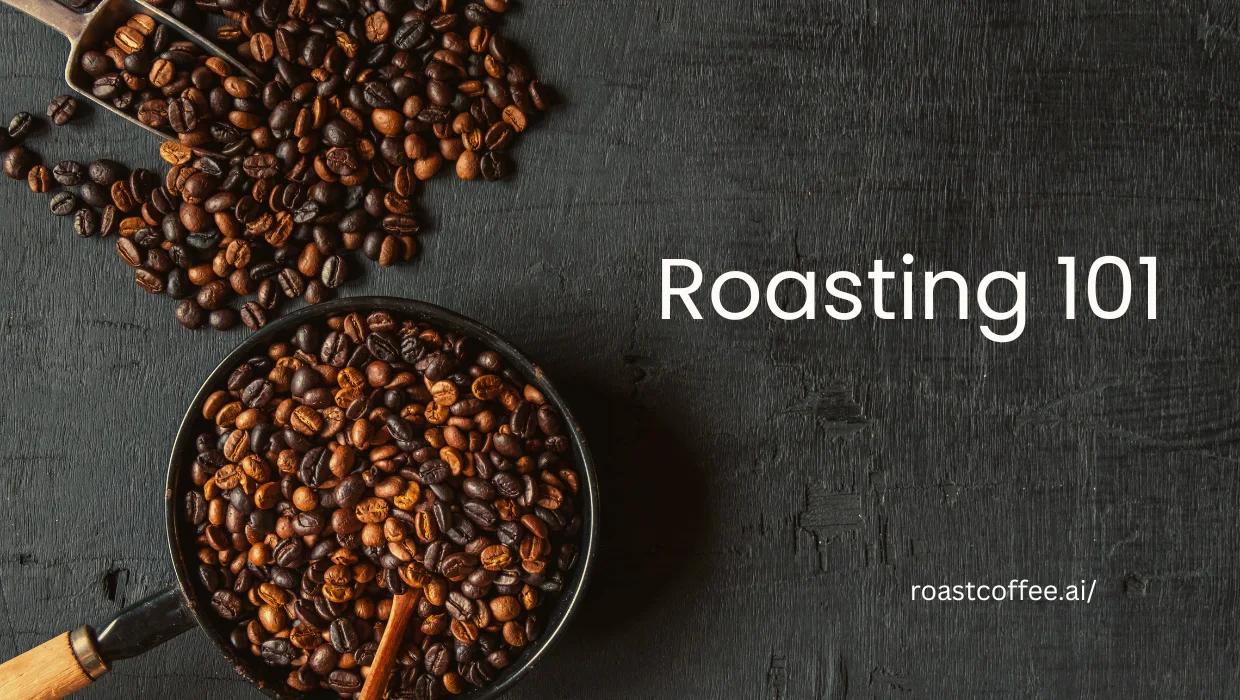Introduction
If green coffee is the starting point, roasting is the great transformation — where science meets artistry, and where the true character of the bean comes alive.
In this second chapter of our “A to Z of Coffee” series, we dive into the fascinating world of roasting. Whether you’re a home roaster just starting out or someone who enjoys exploring what makes each cup unique, understanding key roasting terms is essential. From caramelization to crack stages, this glossary will help you decode the language of roasting and bring greater appreciation to the craft behind every bean.
The Coffee Glossary: Roasting
Artisan Roaster: A small-scale coffee roaster who emphasizes quality, craft, and often direct relationships with coffee producers, focusing on bringing out the best in each bean.
Batch Roaster: A coffee roaster that processes coffee beans in distinct batches, as opposed to a continuous flow roaster.
Caramelization: A chemical reaction that occurs during coffee roasting where sugars in the bean break down and create new flavor compounds, contributing to sweet, nutty, and roasted notes.
Chaff: The dried skin of the coffee bean that separates and flakes off during roasting. It’s lightweight and often collected in a chaff collector in roasters.
City Roast: A light to medium roast level, typically reaching the beginning of the first crack. It emphasizes the coffee’s origin characteristics, with bright acidity and distinct varietal flavors.
Clustering: When coffee beans stick together during roasting, often due to high moisture or sugar content, leading to uneven roasting.
Dark Roast: A roast level where beans are roasted past the second crack, resulting in a dark, oily appearance and flavors dominated by roast notes (smoky, bitter, carbonized), with most origin characteristics diminished.
Degassing: The release of carbon dioxide gas from roasted coffee beans. This process occurs most rapidly immediately after roasting and continues for several days. It’s why coffee is often rested before brewing for optimal flavor.
First Crack: The initial audible cracking sound during coffee roasting, indicating that the beans are expanding rapidly and moisture is escaping. It marks the beginning of the light roast phase.
Light Roast: Coffee roasted to a relatively light color, typically before or just at the beginning of the first crack. These roasts highlight the coffee’s inherent acidity and origin characteristics.
Resting (Degassing): The period after roasting where coffee beans are allowed to release carbon dioxide. This is crucial for optimal flavor development and brewing performance.
Roast Curve: A graphical representation of the temperature progression of coffee beans during roasting over time. It’s a critical tool for roasters to control and replicate roast profiles.
Roast Level: The degree to which coffee beans have been roasted, influencing their color, flavor, and aroma. Common levels include light, medium, and dark.
Roaster: 1. An individual who roasts coffee beans. 2. The machine used to roast coffee beans.
Second Crack: The second audible cracking sound during coffee roasting, occurring at higher temperatures than the first crack. It indicates a darker roast level and a more brittle bean structure.
Staling: The process by which roasted coffee loses its freshness, aroma, and flavor over time due to oxidation and the release of volatile compounds.
Conclusion
Roasting is more than just applying heat — it’s a delicate dance of time, temperature, and intuition. Each stage, from the first crack to the final cooling, shapes the coffee’s flavor, aroma, and body. Understanding this process equips you to recognize and appreciate the choices made behind every cup, whether you’re roasting at home or buying from a local roaster.
In our next post, we’ll move into the brewing stage — where water and technique unlock all the flavors developed during roasting. Until then, may your beans be fresh and your curiosity never stop roasting.
Got questions about roast profiles or troubleshooting a batch? Roastbot is always ready to help!


